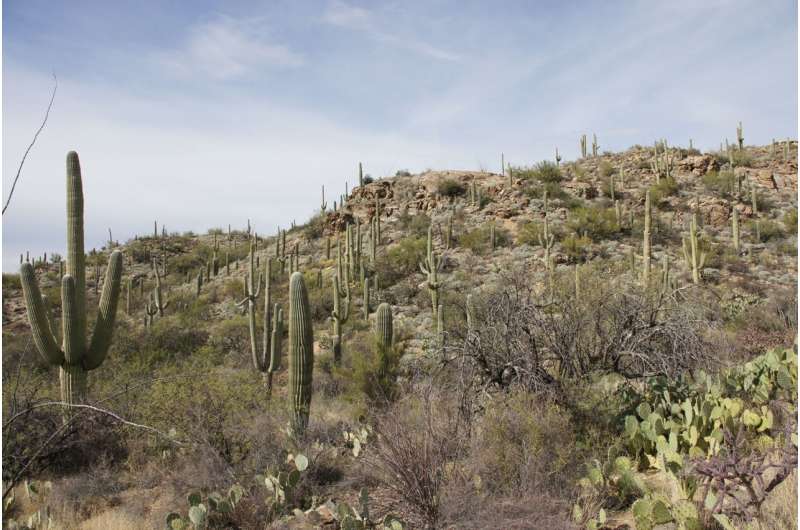This article has been reviewed according to Science X's editorial process and policies. Editors have highlighted the following attributes while ensuring the content's credibility:
fact-checked
peer-reviewed publication
trusted source
proofread
Researchers develop new method for assessing climate change risks to ecosystems

The Bayreuth plant ecologists Prof Dr. Steven Higgins and Dr. Timo Conradi argue in favor of interpreting the coming climatic changes from the perspective of plants in order better to assess the risks of climate change for ecosystems.
If information on the physiological reactions of plant species to changing temperatures, soil water content, and atmospheric CO2 concentrations is taken into account, the consequences of climate change for ecosystems can be better predicted. They report this in a recent article in Nature Ecology & Evolution.
Predicting the risks to species and ecosystems from climate change is necessary to develop strategies for adapting conservation practices A common approach to risk assessment quantifies how much the climate will change in an area. The results then read, for example, "Region A will be exposed to greater climatic changes than other regions, so the climate change risk for the ecosystems in Region A is particularly high."
"However, it is unlikely that the climate change risk will be correctly assessed using this method," says Dr. Timo Conradi, a member of staff at the Chair of Plant Ecology at the University of Bayreuth and lead author of the recently published study.
"If it does not also take into account how the growth of plants reacts to climate change, this method may identify incorrect risk areas." For example, an additional degree of warming in hot tropical climates can have a negative effect on plant growth, while it tends to promote growth in cold tundra climates. "The physiological reactions of plants to climatic changes should, therefore, be taken into account in the risk assessment," adds Conradi.
The Bayreuth researchers have now combined physiological growth models of over 135,000 vascular plant species and information on the growth form of these species with climate data. This has made it possible to describe the suitability of current and future climates for the various plant growth forms that characterize the Earth's ecosystems, such as deciduous trees, conifers, grasses, and succulents.
The Bayreuth researchers have labeled this description of the climate from the perspective of plant growth forms the "phytoclimate." On this basis, the researchers predict that, depending on the extent of future greenhouse gas emissions, between 33% and 68% of the global land surface will experience a significant change in the phytoclimate, i.e., the way in which the climate influences the formation of ecosystems, by 2070.
The Bayreuth plant ecologists also predict that phytoclimates will develop on 0.3 to 2.2% of the land surface that does not exist today and that 0.1 to 1.3% of the currently existing phytoclimates will disappear.
The model projections also show where the greatest climatic changes will occur by the end of the century from a plant-physiological perspective, which of the phytoclimates existing on Earth today will no longer exist in the future, and where new climates will emerge from a plant-physiological perspective.
"The geographical pattern of change, disappearance, and novelty of phytoclimates differs significantly from the patterns of climate trends identified in previous studies," reports Conradi. The consequence of this must be a reorientation of nature conservation strategies, particularly in the regions that the study has identified as new high-risk regions, in order to positively shape ecological change there.
"Our results indicate that a profound change in the biosphere and a significant shift in the Earth's vegetation zones is underway, and they emphasize the need for timely adaptation of biodiversity conservation strategies. However, our results also show that negative ecological consequences can be significantly mitigated by reducing greenhouse gases."
More information: Timo Conradi et al, Reassessment of the risks of climate change for terrestrial ecosystems, Nature Ecology & Evolution (2024). DOI: 10.1038/s41559-024-02333-8
Journal information: Nature Ecology & Evolution
Provided by Bayreuth University




















